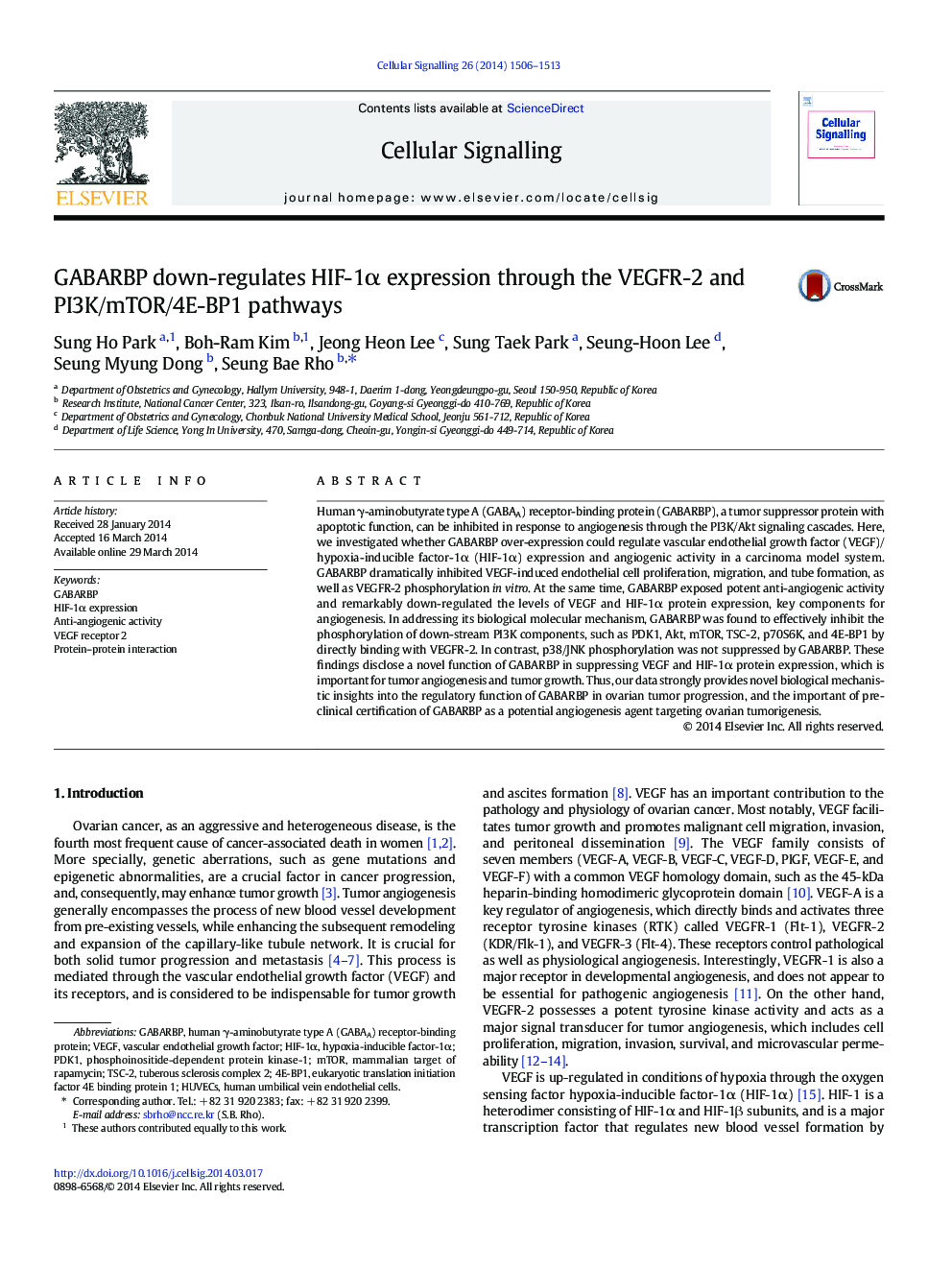| Article ID | Journal | Published Year | Pages | File Type |
|---|---|---|---|---|
| 10816066 | Cellular Signalling | 2014 | 8 Pages |
Abstract
Human γ-aminobutyrate type A (GABAA) receptor-binding protein (GABARBP), a tumor suppressor protein with apoptotic function, can be inhibited in response to angiogenesis through the PI3K/Akt signaling cascades. Here, we investigated whether GABARBP over-expression could regulate vascular endothelial growth factor (VEGF)/hypoxia-inducible factor-1α (HIF-1α) expression and angiogenic activity in a carcinoma model system. GABARBP dramatically inhibited VEGF-induced endothelial cell proliferation, migration, and tube formation, as well as VEGFR-2 phosphorylation in vitro. At the same time, GABARBP exposed potent anti-angiogenic activity and remarkably down-regulated the levels of VEGF and HIF-1α protein expression, key components for angiogenesis. In addressing its biological molecular mechanism, GABARBP was found to effectively inhibit the phosphorylation of down-stream PI3K components, such as PDK1, Akt, mTOR, TSC-2, p70S6K, and 4E-BP1 by directly binding with VEGFR-2. In contrast, p38/JNK phosphorylation was not suppressed by GABARBP. These findings disclose a novel function of GABARBP in suppressing VEGF and HIF-1α protein expression, which is important for tumor angiogenesis and tumor growth. Thus, our data strongly provides novel biological mechanistic insights into the regulatory function of GABARBP in ovarian tumor progression, and the important of pre-clinical certification of GABARBP as a potential angiogenesis agent targeting ovarian tumorigenesis.
Keywords
mTORHUVECSHIF-1α4E-BP1PDK1eukaryotic translation initiation factor 4E binding protein 1Phosphoinositide-dependent protein kinase-1Protein–protein interactionHuman umbilical vein endothelial cellshypoxia-inducible factor-1αVascular endothelial growth factorVascular Endothelial Growth Factor (VEGF)Anti-angiogenic activitymammalian target of rapamycintuberous sclerosis complex 2VEGF receptor 2
Related Topics
Life Sciences
Biochemistry, Genetics and Molecular Biology
Biochemistry
Authors
Sung Ho Park, Boh-Ram Kim, Jeong Heon Lee, Sung Taek Park, Seung-Hoon Lee, Seung Myung Dong, Seung Bae Rho,
